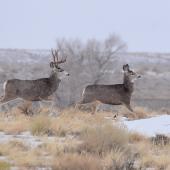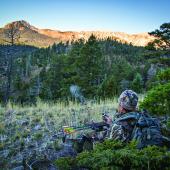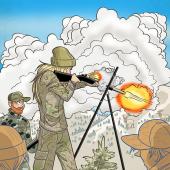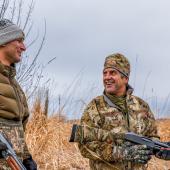Setting Your Sights
Learn to walk before you run.
Hunting has cruxes peppered throughout the entire process. Be it pre-hunt, the stalk itself, or post-harvest, hurdles abound, in all directions. As a first-timer, navigating FWP’s yearly regulations can be an overwhelming and frustrating ordeal. Where do I even start? To get the ball rolling, here are a few key regulatory elements to focus on during the planning stage.
Reading the Map
Montana is broken up into seven regions, all with a regional office. Within each of these regions are isolated units called hunting districts (HDs). These individual sections are what you need to pay attention to. Once you have an idea of where you want to hunt geographically, locate that area’s hunting district in the regs and dig into the fine print.
Licenses vs. Permits
Deer and elk tags come in a couple different forms. Some hunting districts are listed as “General Licenses,” meaning that anyone can hunt those units with an over-the-counter tag. Other districts are good for “Permits” only. These still require a general deer or elk tag, but they also necessitate applying to a specific unit ahead of time and being drawn for it via a lottery system. If drawn, you are restricted to hunting that specific unit all season. (Most permit applications are due either April 1 or June 1, depending on species and location.)
B-Tags
General licenses are colloquially known as A-tags. B-tags refer to additional licenses for antlerless animals (cows and does). Some B-tags can be bought over the counter and some are permits requiring an application. All of them have certain restrictions regarding specific hunting districts. Find these details in the left-hand column of the FWP reg table.
Season Dates
In Montana, we can hunt big game dang-near five months out of the year. However, our weapon choice is limited based on the time of the season. Early Season dates occur from mid-August thru the beginning of September. These units are few and far between and typically have additional restrictions. Archery season runs from the beginning of September through mid-October, General Rifle goes from the end of October through Thanksgiving weekend, and MuzzleloaderSeason is typically two weeks in mid-December. These specifics are listed in the middle columns of the reg table. Shoulder Season is the layman’s term for district-specific cow-elk hunts that include both an early and late-season extension to the general season.
Applications
The odds of drawing a permit vary widely depending on the district. Some units give as much as an 80-percent success rate, while other highly coveted areas are below a single percent. As mentioned, special bull/buck permit applications are due April 1 each year, while B-tag apps are due June 1. To increase your chances, you can purchase bonus points, one per species per year. Bonus points are squared plus one for the year your put in for, so if you apply with three of them you have ten hypothetical lottery tickets. For a detailed rundown on success & failure rates, check out the yearly FWP Drawing Statistics Report at fwp.mt.gov.
Final Thoughts
When studying the hunting regulations, in addition to everything above, pay close attention to the “Opportunity Specific and/or Restriction” column on the far right. Consider this the fine-print section where you’ll find tailored regulations such as “valid only on private land,” “not valid on National Forest,” and “may not hunt in any other unit during these dates.” The regs may be thick and detailed, but the information’s there—it’s up to you to know the rules, and follow them.












